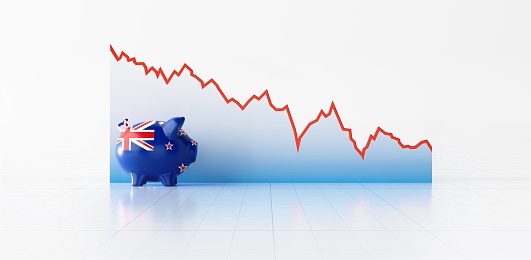Market Update
Markets are a little more defensive at the start of Tuesday’s session. US government bond yields continue to pull back from recent highs (10-year yields are now under 1.65%, more than 10bps below last week’s highs) and this is supporting duration sensitive US equities such as Big Tech, meaning that Nasdaq 100 futures (+0.1%) are holding up pretty well on the day. But the rest of global equity markets are not doing so well, with European equities broadly in the red (Stoxx 600 -0.2%) and S&P 500 futures down about 0.3%. Meanwhile, in FX markets, safe haven JPY and USD are the two best performers and economic-growth commodities like crude oil and industrial metals are for the most part suffering.
It is worth noting that some of this morning’s pull-back in US equities might just be some of yesterday’s gains being unwound. Increased reporting/chatter about the next dose of US fiscal stimulus from the Biden administration helped lift equity market sentiment in the latter part of yesterday’s US session. The New York Times reported that US President Joe Biden’s economic advisors are working on a $3T new spending package to present to him. According to the report, the package will be split into two parts, with the first focused on infrastructure and will be financed through increased corporation taxes and higher taxes on the rich.
The report said that “Biden supports all of the individual spending and tax cut proposals under consideration, but it is unclear whether he will back be splitting his agenda into pieces, or what legislative strategy he and Democratic leaders will pursue to maximize the chances of pushing the new programs through Congress given their narrow majorities in both chambers”. Note that the White House released a response to the NYT article, claiming that the proposals outlined in the report are not “a reflection of White House thinking”. But where there is smoke there is fire, investors will be thinking.
Other major fundamental development since yesterday’s US session are less positive, and perhaps this is why markets are seeing a more defensive bias this morning. China has responded to US, EU, UK and Canadian sanction with their own raft of sanctions on officials from these countries. China and Russia have also come together to release a joint statement condemning sanctions from Western nations against them. Elsewhere, the European Covid-19 news remains negative (Germany announced that over the Easter period people should stay at home and only food shops will be open and there is increasing talk of travel bans to mainland Europe from the UK).
Finally, and markets this morning did not pay too much attention to this, but the regional Philadelphia Fed Non-manufacturing survey for the month of March was just released and showed strength across the board. This comes in wake of a string of other strong regional Fed surveys for this month and bodes well for tomorrow’s preliminary Markit PMI survey for March, which is much more widely followed (though not as widely followed as ISM PMIs which will be released at the start of April). Strong PMIs tomorrow could boost risk appetite.
Rest of G10 FX
NZD is the big G10 underperformer this morning, with NZDUSD cratering nearly 2.0% from above the 0.7150 level to the low 0.7000s, its lowest point since December 2020. Note that in early December 2020, the 0.7000 level acted as a strong area of support, while ahead of this level there is NZDUSD’s 21DMA at 0.7010 – any longer-term NZD bulls might see Tuesday’s pullback as an opportunity to get long the kiwi, though many traders will be wary not to “catch a falling knife” and may want to wait to see how things shake out over the coming days just in case the cross does continue to crash to the downside.
In terms of the reason for today’s selling pressure; the New Zealand government announced a new NZD 3.8B housing fund to boost supply of new builds with the aim of slowing the recent run higher in house prices and maintaining economic stability – market participants seem to see this move by the government as taking some of the pressure off of the RBNZ to tighten policy moving forward; recount that the RBNZ is now expected by the government to take house price inflation into account as part of its inflation mandate, so when the government acts to curb house price inflation, this takes pressure off the RBNZ to tighten policy to achieve the same result, and so is being taken as an NZD negative. Looking ahead for the kiwi, February trade data will be in focus tonight.
NZD underperformance is dragging AUD lower in sympathy despite a lack of any fresh Australia related fundamental updates; AUDUSD has fallen below the 0.7700 level, its lowest point in nearly two weeks and down about 0.9% on the session. CHF and GBP are the next worst performers, down 0.7% and 0.5% respectively, both suffering as a result of the US dollar’s advances, with the former unsurprisingly handing back a decent portion of its outsized gains on Monday; USDCHF has surged all the way from the low 0.9200s to back above 0.9300 while GBPUSD is back from lows around 1.3750 but still struggling below the 1.3800 mark.
Sterling did not really derive much impetus from UK employment data released this morning; the unemployment rate in January was a little lower than expected at 5.0% (forecasts were for a small rise to 5.2% from 5.1%), while the rolling three-month employment change number for January came in a little better than expected at -147K versus forecasts for -167K. February’s flash estimate of total employment showed employment levels having dropped 2.4% since this time last year, a drop of 693K jobs. Note that the presence of the government’s furlough scheme continues to distort the labour market data as many on not working but still on their employees’ payrolls via furlough do not show up as unemployed. As furlough is unwound over the summer, unemployment is expected to rise, the question being how much (current BoE forecasts assume unemployment rising to 7.5% this year, but this will likely be revised lower at the next BoE meeting).
Meanwhile, EUR and CAD are also suffering as a result of strength in the US dollar, with EURUSD down about 0.4% on the session to back below the 1.1900 level and USDCAD is up about 0.4%, having rallied from the low 1.2500s overnight to current levels around 1.2575. The euro seems mainly to be trading as a function of USD dynamics right now and does not seem to have been paying as much attention to European pandemic news as, say, European equity or crude oil markets have been. Meanwhile, Loonie traders await comments from BoC Deputy Governor Toni Gravelle later in the afternoon.
The Day Ahead
Fed speak is the name of the game for the rest of today’s session; Fed’s Kaplan has already spoken and was talking about how he expects the Fed to start hiking next year (he is on the hawkish end of Fed opinion). Fed Chair Powell will be testifying before Congress at 1500GMT (his pre-released comments contained no new info, but the Q&A will be worth watching). Fed’s Bostic, Bullard, Barkin, Brainard and Williams will also be speaking. Loonie traders should also keep an eye on comments from BoC’s Gravelle. Crude oil traders should watch private weekly inventories in the evening, and NZD traders will be on notice for trade balance data at the start of the Wednesday APac session.




